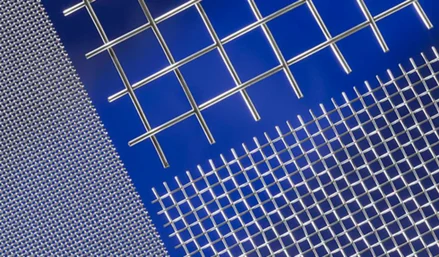dec . 16, 2024 11:02 Back to list
ornamental expanded metal
The Versatility and Aesthetic Appeal of Ornamental Expanded Metal
Ornamental expanded metal is a unique and versatile material that has gained significant popularity across various industries, from architecture and construction to art and design. This innovative material is created by taking a solid sheet of metal and puncturing it with a series of precise cuts to create a lightweight, mesh-like structure. The result is a product that combines strength, functionality, and aesthetic appeal, making it an excellent choice for a wide range of applications.
One of the primary advantages of ornamental expanded metal is its durability. Made from materials such as aluminum, stainless steel, and carbon steel, it offers excellent resistance to corrosion and wear, making it suitable for both indoor and outdoor use. Its structural integrity allows it to withstand heavy loads and impacts, making it a popular choice for safety barriers, grating, and flooring in commercial and industrial settings.
The visual appeal of ornamental expanded metal is one of the key factors driving its popularity. The variety of patterns and designs that can be created with this material allows designers and architects to incorporate unique elements into their projects. Whether it’s a decorative façade for a building, an eye-catching feature wall, or intricate railing designs, ornamental expanded metal can add a modern, industrial touch to any space. Its versatility in design means that it can cater to different aesthetic preferences, from sleek and minimalistic to bold and elaborate.
ornamental expanded metal

In recent years, there has been a growing trend toward using ornamental expanded metal in sustainable architecture. As the demand for eco-friendly building materials rises, expanded metal has emerged as a viable option due to its lightweight nature, which can reduce transportation costs and energy consumption. Additionally, many manufacturers are now producing expanded metal from recycled materials, further enhancing its sustainability credentials. This aligns perfectly with the principles of green building and allows architects to explore innovative designs while reducing their environmental footprint.
Ornamental expanded metal is not just limited to functional uses; it has also become an essential element in art and design. Artists and designers often experiment with this material to create striking installations and sculptures. Its ability to play with light and shadow, along with its various finishes, such as powder coating or anodizing, allows for endless creative possibilities. The interplay of transparency and structure can transform spaces, creating dynamic environments that engage and inspire viewers.
Additionally, the installation of ornamental expanded metal is relatively straightforward. Its lightweight nature makes handling and installation easier compared to solid metal sheets, thus reducing labor costs. With the availability of various fixing methods, including welding, riveting, or fasteners, this material can be seamlessly integrated into existing structures or new constructions.
In conclusion, ornamental expanded metal presents a myriad of benefits that make it a favored choice across different sectors. Its blend of strength, versatility, and aesthetic charm makes it appealing for architects, designers, and artists alike. As we move toward more sustainable practices in architecture and design, the role of ornamental expanded metal is likely to grow, providing creative solutions that meet the demands of modern-day projects. Whether it is enhancing the functionality of a space or adding a touch of artistic flair, ornamental expanded metal is a material that truly embodies both practicality and beauty in our built environments.
share
-
CE Certified 250 Micron SS Mesh - Precision Filtration & Strength
NewsAug.21,2025
-
CE Certified Woven Wire Mesh Filters | Premium Filtration Solutions
NewsAug.19,2025
-
High-Performance Particle Filters: Optimal Mediums & Applications
NewsAug.18,2025
-
Competitive Screen Mesh Price | 1/4", 1/8", 1/2" Wire Mesh Screens
NewsAug.17,2025
-
CE Certified 250 Micron SS Mesh: Precision & Durability
NewsAug.15,2025
-
CE Certified 250 Micron Stainless Steel Mesh - Durable & Precise
NewsAug.14,2025

